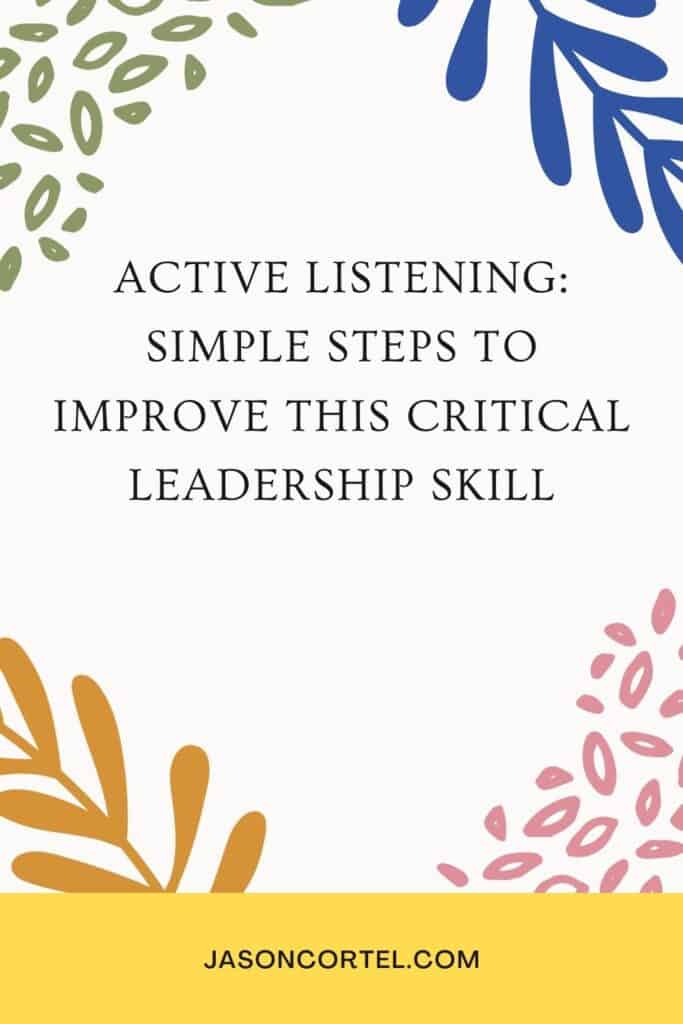Active listening is a powerful tool for leaders. It can help you gain insight and respect from those around you and build relationships. Active listening is an important skill that all leaders should develop at any level in their organization. Active listening can also help you gain information about the needs of your team members or customers, which will help you create more effective strategies for your company’s growth. In this post, we will discuss active listening, what it entails, and how to improve your active listening skills- so that you can become an effective leader.
What is active listening?
Active listening is a type of communication in which the leader is fully engaged in the conversation. The leader is paying attention to the speaker and is trying to understand what the speaker is saying. Active listening involves making eye contact, paying attention to body language, and taking notes if necessary. For active listening to be effective, the leader must set aside their own thoughts and feelings and focus on what the speaker is saying. Leaders who improve their active listening skills help employees feel listened to and valued on the job.
Active listening is critical in conflict resolution. When two people are in conflict, active listening can help them understand each other’s points of view. Active listening can also help resolve misunderstandings and repair damaged relationships. Leaders spend most of their day resolving conflict between employees or customers. For that reason, active listening is a critical leadership skill and leaders need to improve their active listening.
Why active listening is a critical skill for leaders.
Listening is an essential part of communication that many leaders may overlook. Effective active listening skills are related to increased employee commitment, greater frequency of loyalty, and lower turnover among employees. Listening increases the likelihood of positive interactions with employees who are more likely to be influenced by these leaders. Active listening is a way for leaders to understand their employee’s perspectives, needs, and goals. As a result, when leaders improve their active listening skills they connect more personally with their employees.
What are the benefits to organizations when leaders are highly skilled at active listening?
One of the first benefits active listening provides for your organization is that active listening helps you earn trust, which leads to better communication with your team and customers. Active listening helps leaders show respect and understanding to employees and customers. Leaders highly skilled at active listening can quickly calm down difficult situations, promoting productivity and cohesion in the workplace. Finally, active listening is an essential leadership communication skill, so leaders should continuously improve their active listening.

Simple steps to help you improve your active listening skills.
Active listening is a skill that leaders can improve. It involves paying close attention to the other person, not interrupting, and reflecting back on what you have heard. Leaders can improve their active listening by following these simple steps:
- Make eye contact and focus on the speaker.
- Don’t interrupt. Wait until the speaker has finished speaking before you respond.
- Reflect back what you have heard. Paraphrase what the speaker has said to make sure you understand them correctly.
- Ask questions to clarify anything that is still unclear.
- Show interest and engagement by nodding your head, making facial expressions, and using verbal cues such as “uh-huh” and “mmm.”
When leaders intentionally improve their active listening, they become far more effective. They can better understand the needs and wants of the employees and the customers. As a result, they can better create and execute more effective strategies to help the organization meet its goals.
These simple steps can help you improve your active listening, making you a more effective leader. What techniques do you use to demonstrate active listening? Please share them in the comments below.


